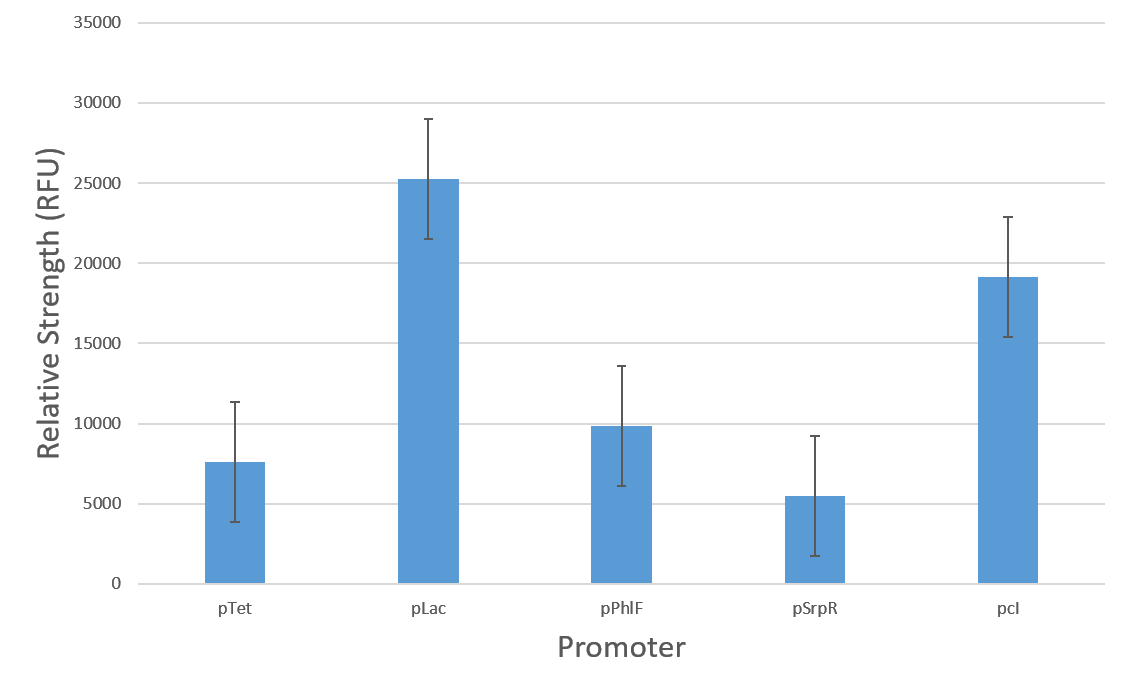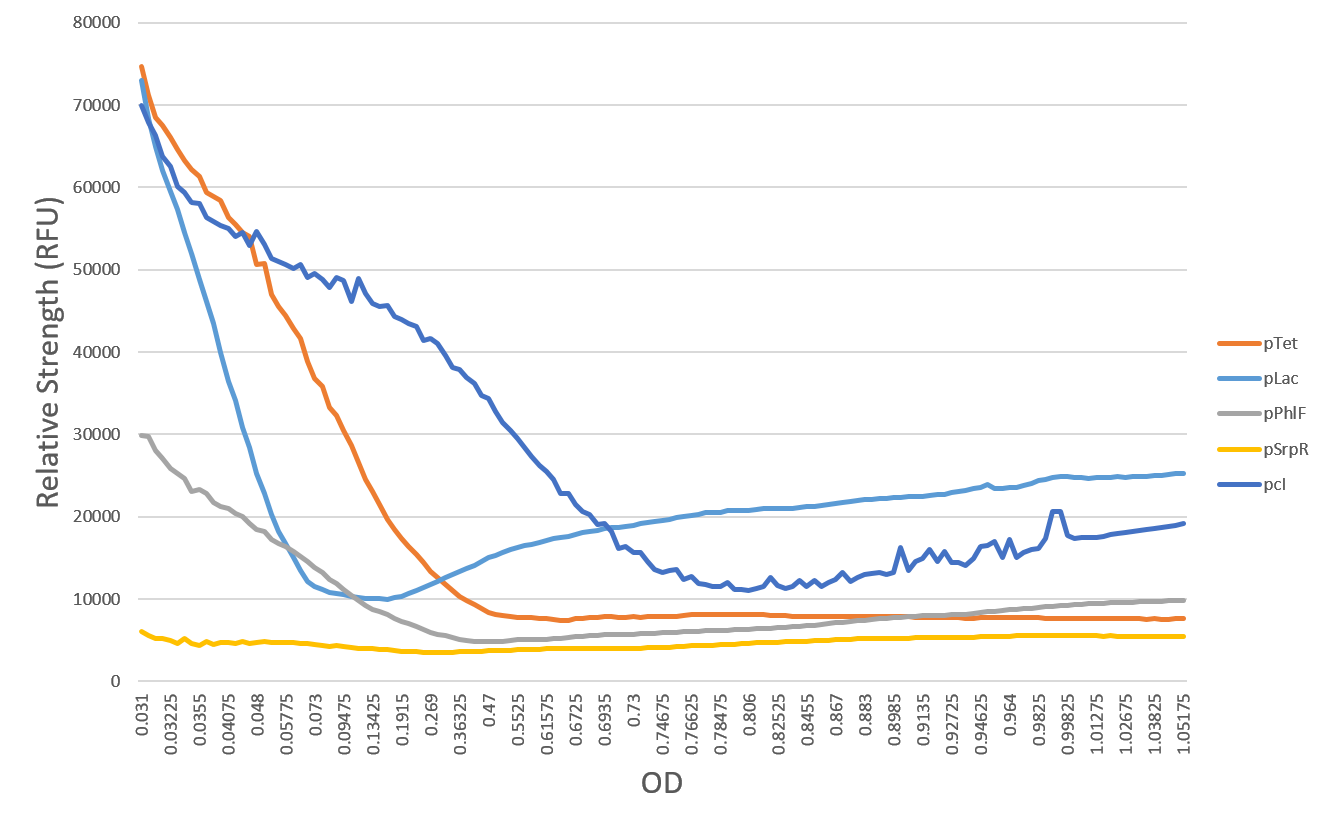Part:BBa_K2525015
PsrpR (SrpR Repressible Promoter)
This part is an improvement to the part (K1725020) submitted by iGEM Glasgow. This part contains a promoter that is repressible by the SrpR repressor, which is a high cooperativity repressor (n = 3.2). This can be used as a part of a genetic circuit, where the SrpR repressor is present. The high cooperativity of this part is of great significance to synthetic biology, as it can be used to give steeper response curves for repression. Ideally, when we tend to look at genetic elements as digital logic tools, we require steep transitions of protein levels from 0 to 1 or 1 to 0 (representing and ON and OFF state). However, due to various limitations in biological systems, the response is often in the form of a gradient and not a steep curve. Due to its high cooperativity, SrpR can give a better and steeper curve than most traditional repressors. This is highly desirable.
IIT Delhi 2017 - Characterization of Promoter Strength
<p> We see in Fig. 1 that the decreasing order of strengths for the five repressible promoters is pLac, pcI, pPhlF, pTet and pSrpR. This is also evident in Fig. 2 when all the 5 promoters settle to a steady state. Fig. 3 depicts the protein production rates for the promoters. pLac has the largest production rate reaffirming its highest strength. However, despite dominating completely in terms of protein production rate, we see in Figs. 2 and 4 that in the initial transient phase, pLac has lower relative strength compared to pTet and pcI. This is due to the highest dilution rate for pLac in this regime, which can be seen in Figs. 5 and 6. Similar arguments can be made about pcI.
As shown in Fig. 2, pLac and pcI have three distinct regions of behavior in terms of relative strength over time. In the initial transient phase, dilution rate is higher than the protein production rate, thus we see that relative strength per OD decreases over time. The middle corresponds to overcompensation phase, where protein production rate surpasses the dilution rate. Finally, the relative strength settles a steady state value, entering an exact compensation between protein production and dilution rates. Contrary to pLac and pcI, the other promoters don’t exhibit the overcompensation phase.
Sequence and Features
- 10COMPATIBLE WITH RFC[10]
- 12INCOMPATIBLE WITH RFC[12]Illegal NheI site found at 20
- 21COMPATIBLE WITH RFC[21]
- 23COMPATIBLE WITH RFC[23]
- 25COMPATIBLE WITH RFC[25]
- 1000COMPATIBLE WITH RFC[1000]
| None |






